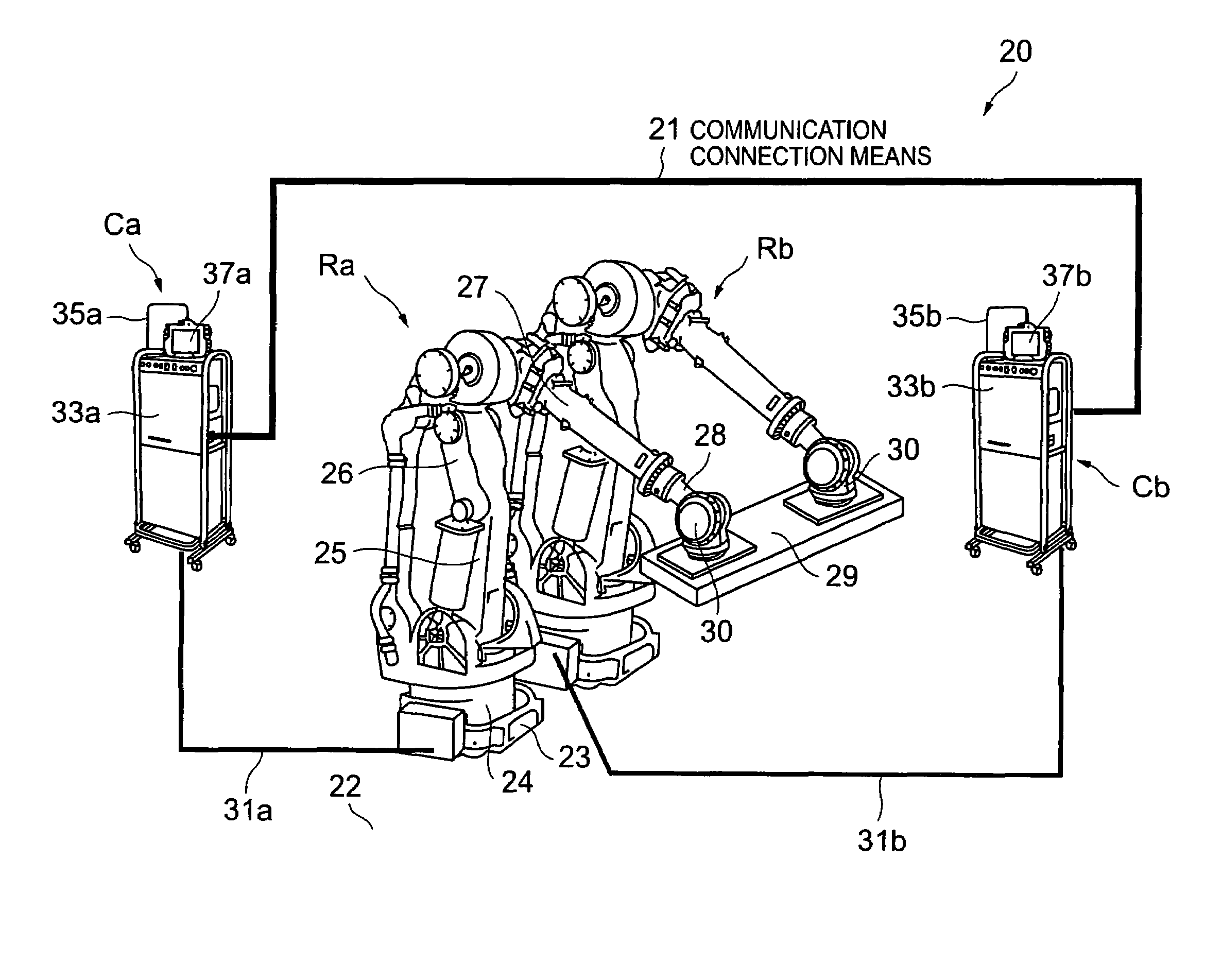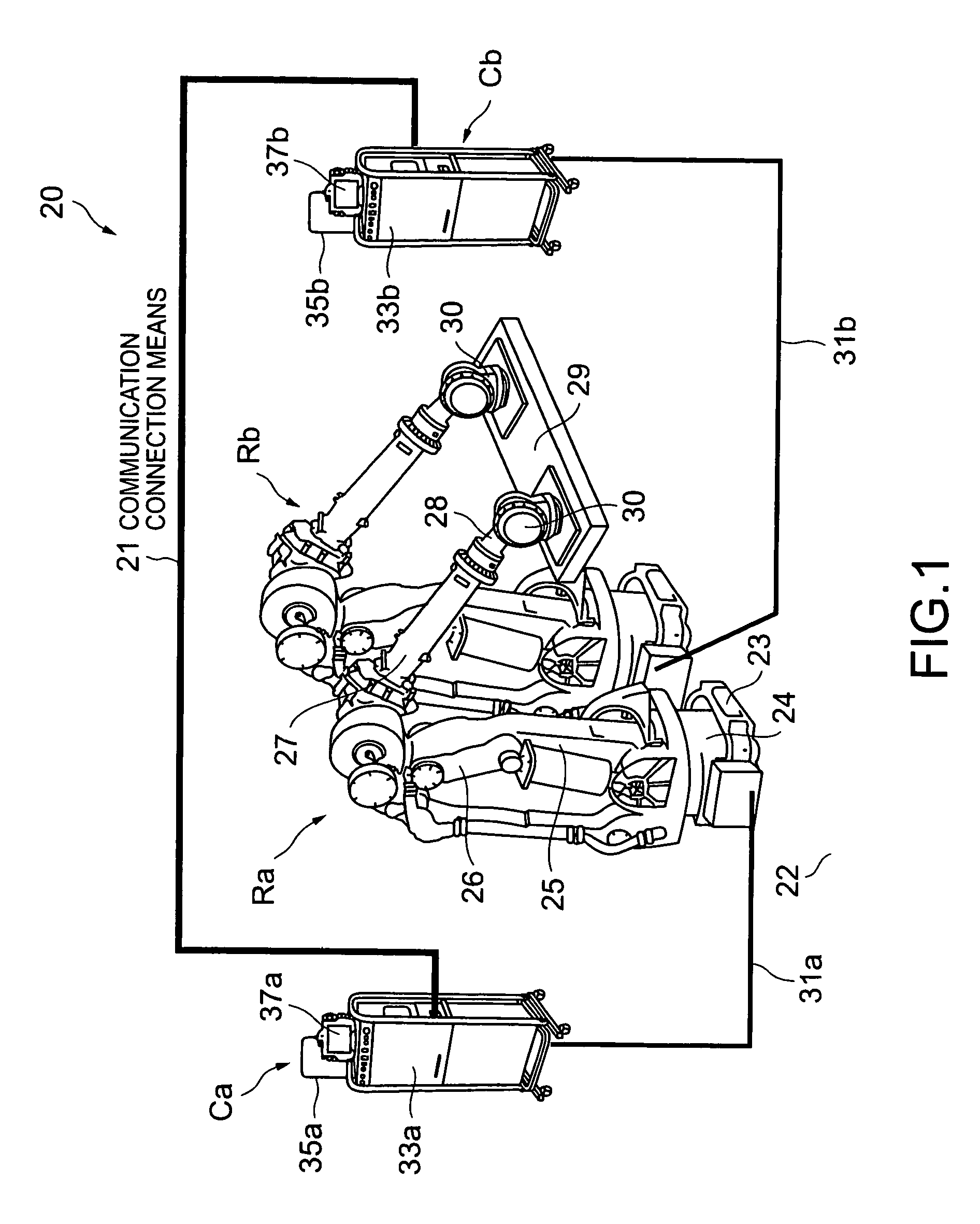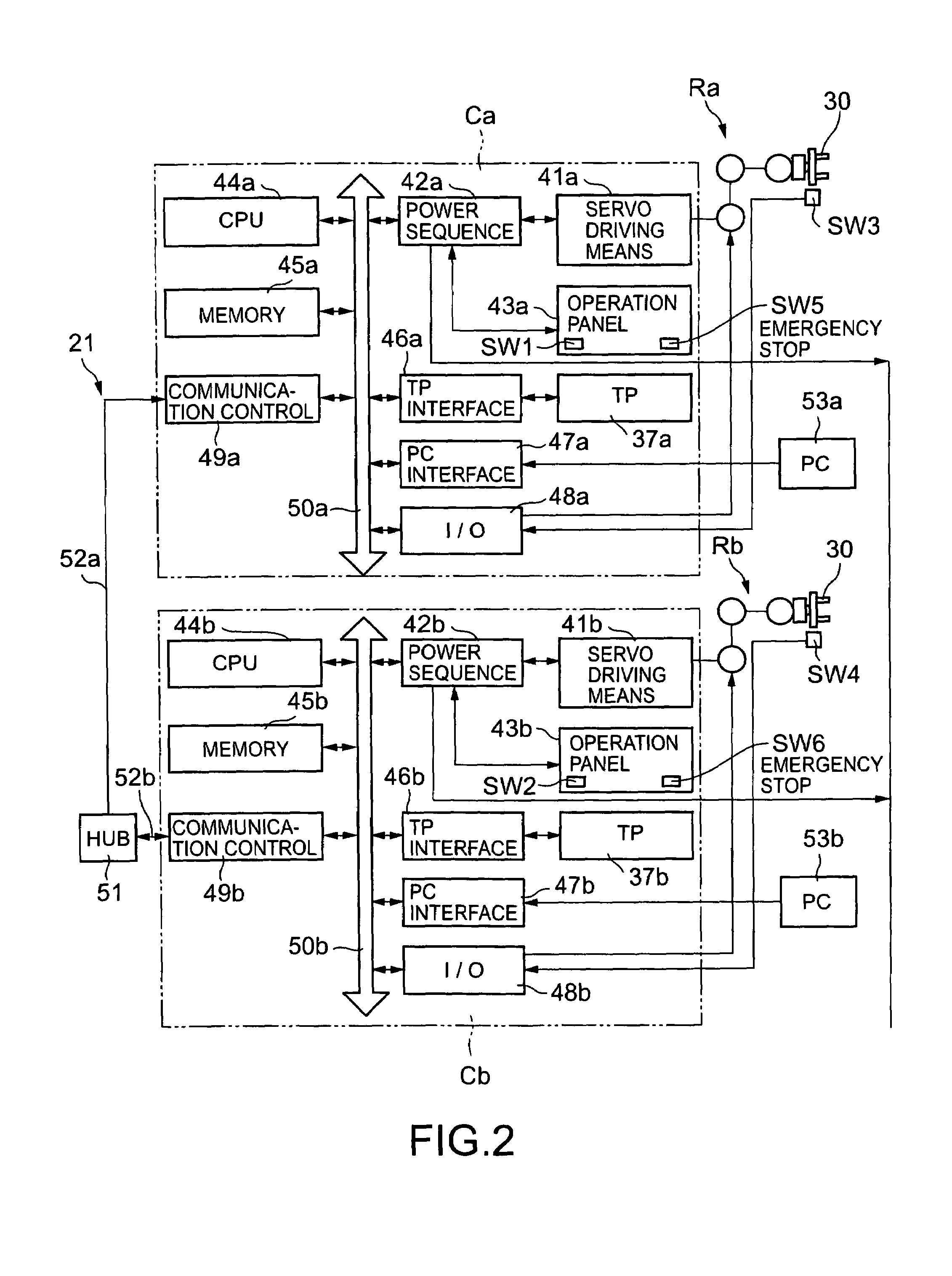Cooperative control system of robots
a robot and cooperative technology, applied in the field of cooperative control systems of robots, can solve the problems of inability to maintain the plurality of control units, inability to poll for the flag or stand inability to use the waiting time such as polling for the flag or standing by for an event, so as to prevent the variation of the relative position and posture of the master and slave robots, and achieve the effect of high precision and relative position and posture relationship
- Summary
- Abstract
- Description
- Claims
- Application Information
AI Technical Summary
Benefits of technology
Problems solved by technology
Method used
Image
Examples
Embodiment Construction
[0052]The robot cooperative control system (hereinafter, may be abbreviated just to “cooperative control system”) as an embodiment of the present invention shown in FIG. 1 includes a plurality of robots Ra and Rb (2 units in this embodiment), two control units Ca and Cb for independently controlling the robots Ra and Rb mutually and individually, and a communication connection means 21 for mutually connecting the control units Ca and Cb communicatably.
[0053]The robots Ra and Rb, as described as an example, are respectively realized by a 6-axis multi-joint robot in which a rotator 24 is installed on a base 23 installed on an almost horizontal floor 22 on a predetermined working stage in a factory at an interval, and on the rotator 24, a plurality of arms 25, 26, and 27 are installed angle-changeably round the axes, and a wrist 28 is installed on the tip of the arm on the free end side, and on the wrist 28, a hand 30 for removably holding a workpiece 29 is installed.
[0054]The control ...
PUM
 Login to View More
Login to View More Abstract
Description
Claims
Application Information
 Login to View More
Login to View More - R&D
- Intellectual Property
- Life Sciences
- Materials
- Tech Scout
- Unparalleled Data Quality
- Higher Quality Content
- 60% Fewer Hallucinations
Browse by: Latest US Patents, China's latest patents, Technical Efficacy Thesaurus, Application Domain, Technology Topic, Popular Technical Reports.
© 2025 PatSnap. All rights reserved.Legal|Privacy policy|Modern Slavery Act Transparency Statement|Sitemap|About US| Contact US: help@patsnap.com



